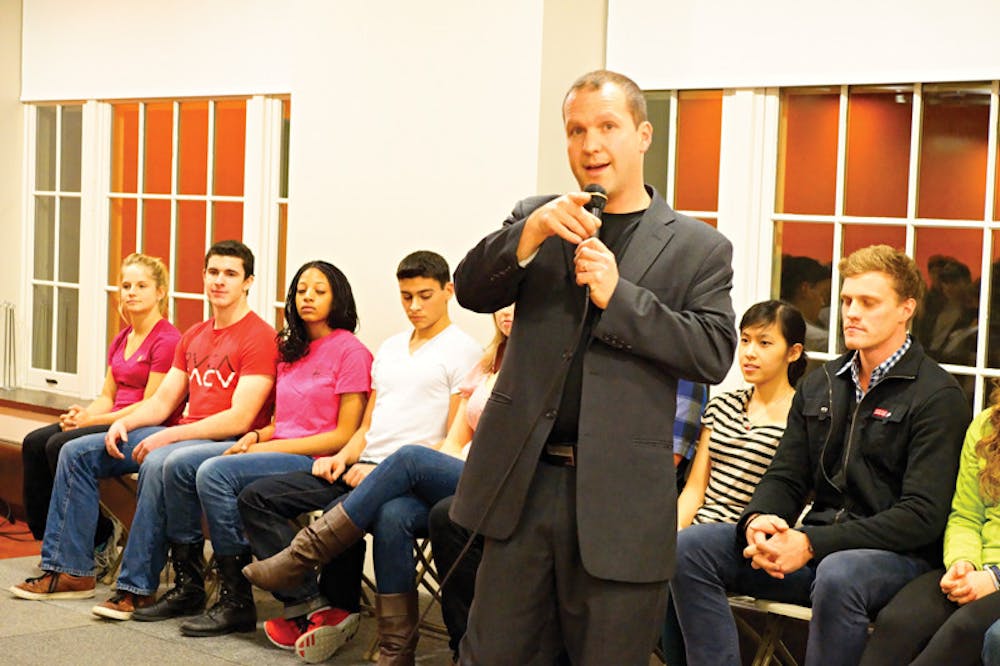It is not often one finds college students screaming about aliens and singing top 40 songs they barely know, but last night, that seemed to be the norm — at least for a couple of hours.
During Frank Santos, Jr.’s hypnosis show, held Thursday at the Stephen Robert ’62 Campus Center, students mimed frantically with their hands because they had forgotten how to speak English. They took off their shirts and could not remember how to put them back on. They performed in “butt-shaking competitions.”
Santos, a comedic hypnotist who has performed at colleges, high schools and corporate events around the country, began his performance with a quick round of hypnosis tests to determine which volunteers from the audience would be hypnotized most easily. He and his 11 chosen volunteers then kept the audience laughing for over an hour as he provided witty commentary on his subjects’ antics.
The field of hypnotism doesn’t just involve speaking in a luring tone and convincing people to do strange things. It is a complex phenomenon, so quantified research concerning its effects on patients is difficult to procure and even more difficult to duplicate, said Catherine Kerr, professor of cognitive, linguistic and psychological sciences.
“There’s a lot of stuff going on in a hypnosis encounter,” Kerr said. “It’s very rich. There’s a lot of information — including nonverbal exchanges of information — between the hypnotist and the person being hypnotized, so that makes it a complex situation to research.”
Hypnosis itself is difficult to describe. The general consensus in the field is that hypnotism is a trance state of susceptibility, in which subjects are cognizant of their surroundings but are more connected to their inner thoughts or the subject on which they were asked to meditate.
A hypnotized person is actually in a hyperattentive state of mind, not in a sleepy semi-conscious state, said Steven Sloman, professor of cognitive, linguistic and psychological sciences. Some people may be more easily hypnotized than others, depending upon their current mental states, their beliefs in the science of hypnosis and perhaps even the structures of their brains.
“What we think might be going on is that there are regions that help you pay attention and make decisions in the prefrontal cortex of the brain, and they tend to be pretty executive-oriented in taking action and things like that,” Kerr said. “In more highly hypnotizable people, there is actually a greater connection between that network and networks that are involved in detecting inner experience.”
Performance hypnotists, Sloman said, are very good at picking out those kinds of people. Though they cannot see the inner structure of a person’s brain, they are adept at analyzing behavioral responses and selecting members of the audience who might be the most susceptible to hypnotism.
Hypnosis may also have therapeutic benefits, Sloman said. “Anything that’s related to stress can be helped through hypnosis, as long as the person is hypnotizable.”
Hypnosis can help alleviate things like driving anxiety, perfectionism, gastrointestinal problems and skin problems, according to the Hypnosis Motivation Institute, a nationally accredited college of hypnotherapy in Southern California.

ADVERTISEMENT




